The Lab, a cornerstone of Watershed+, was developed to explore the intricate and delicate relationship Calgarians have with their watershed. Following an international artist call, five artists – Steve Gurysh, Tim Knowles, Becky Shaw, Peter von Tiesenhausen, Stokley Towles – were invited to Calgary to be immersed in the Utilities and Environmental Protection Department to explore the complexities of our Dynamic Environment . Programming included visits of key infrastructure sites and locations that played an active role within the watershed management system, the city, and the arts community participating in discussions about water management and the topic of Dynamic Environment in round-tables, presentations by subject matter experts, and encouraging critical thinking focused on this subject. The artists were then asked to develop an informed approach in how they wished to respond to this subject in this specific context.
Through immersing artists in this way, the intention was to foster innovative and collaborative art practices, setting up a beneficial exchange of perspective on a subject at the forefront of The City department. This lab format creates an opportunity for contemporary art practice to take part in current thinking around live issues, explores the complex relationship between citizens and their environment and cultivates cross-disciplinary methods of working.
Dynamic Environment, hosted by Contemporary Calgary, is the culmination of the lab and presents a selection of the five artists works over the last three years. How Little We See by amery Calvelli introduces the exhibition to visitors.
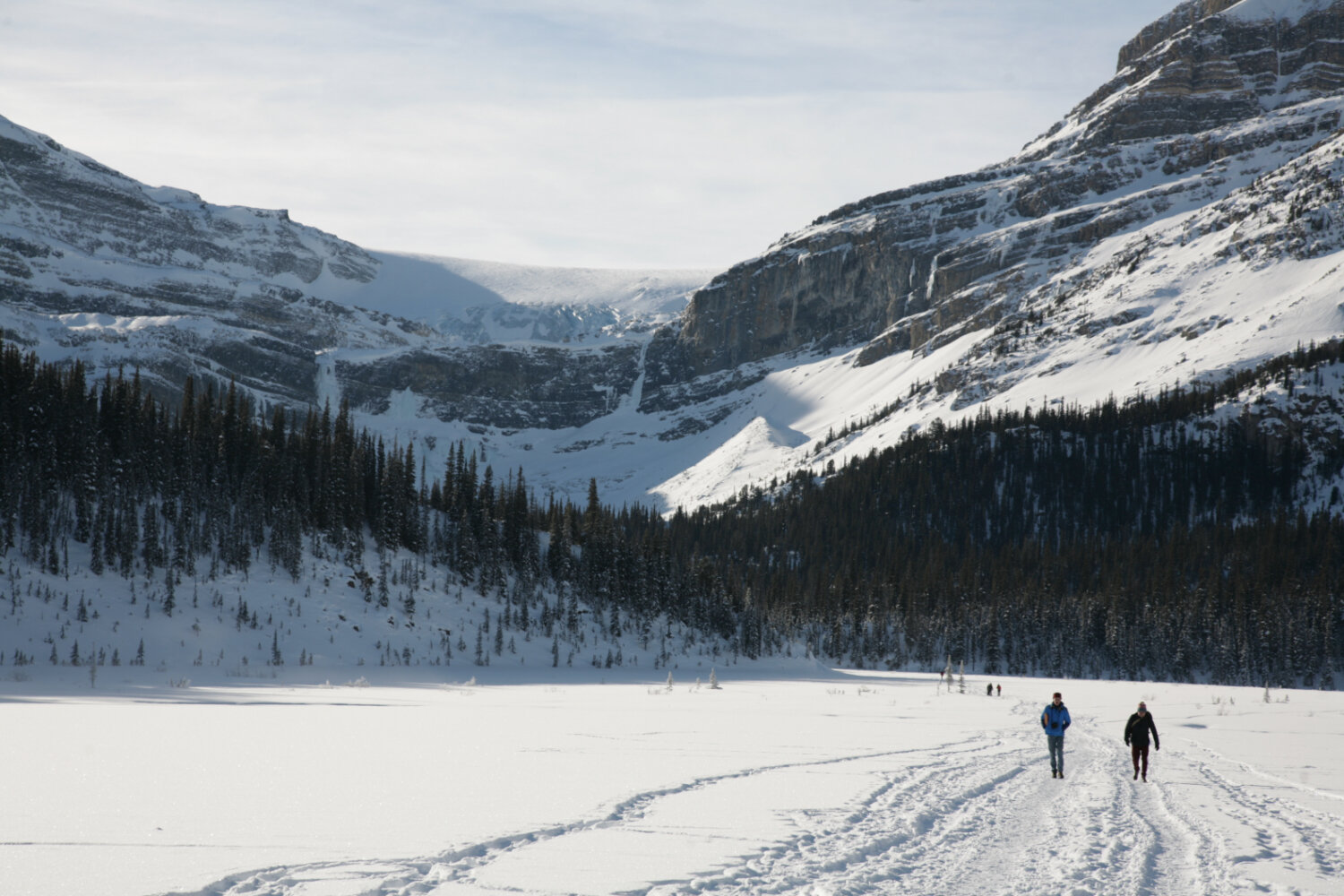
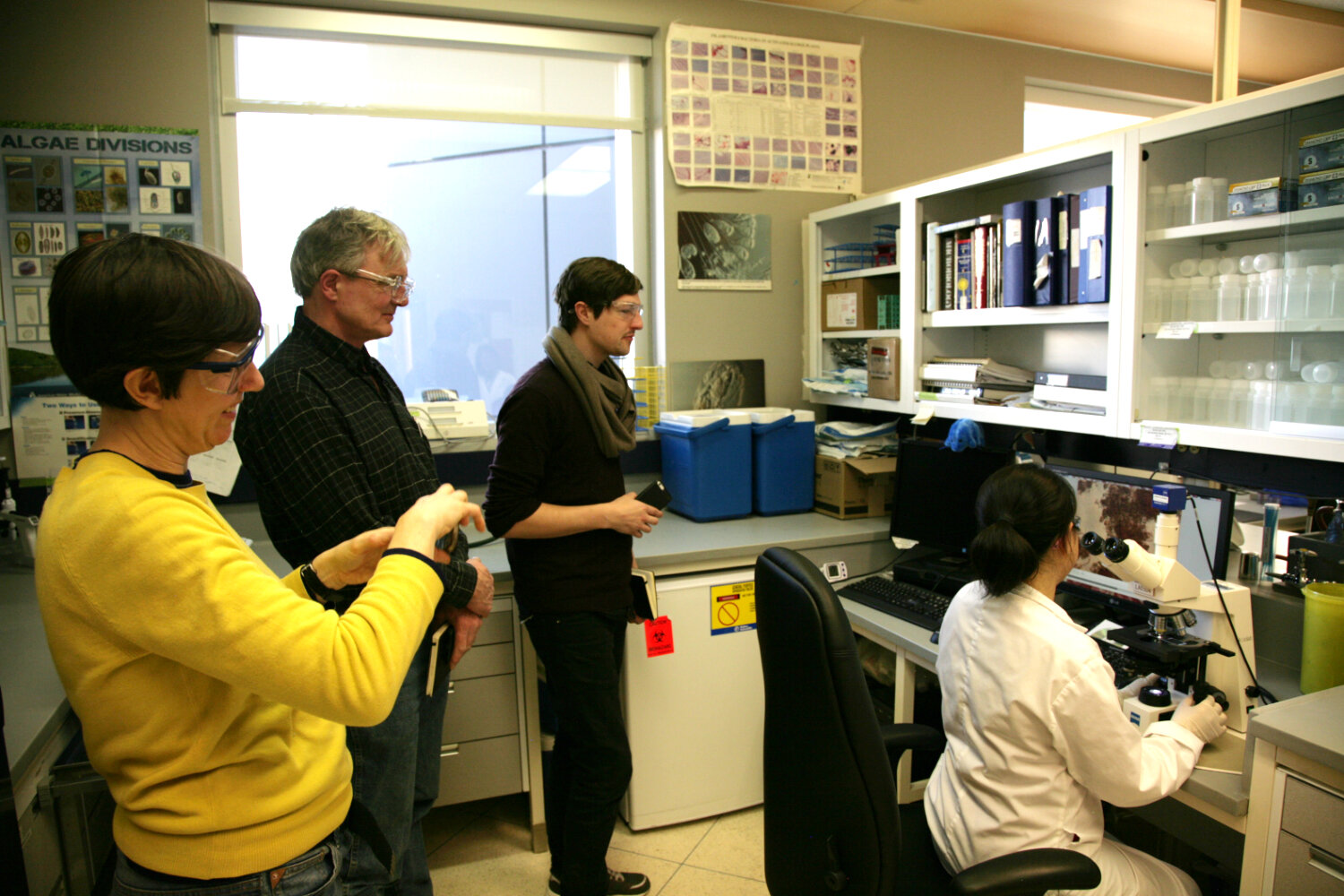
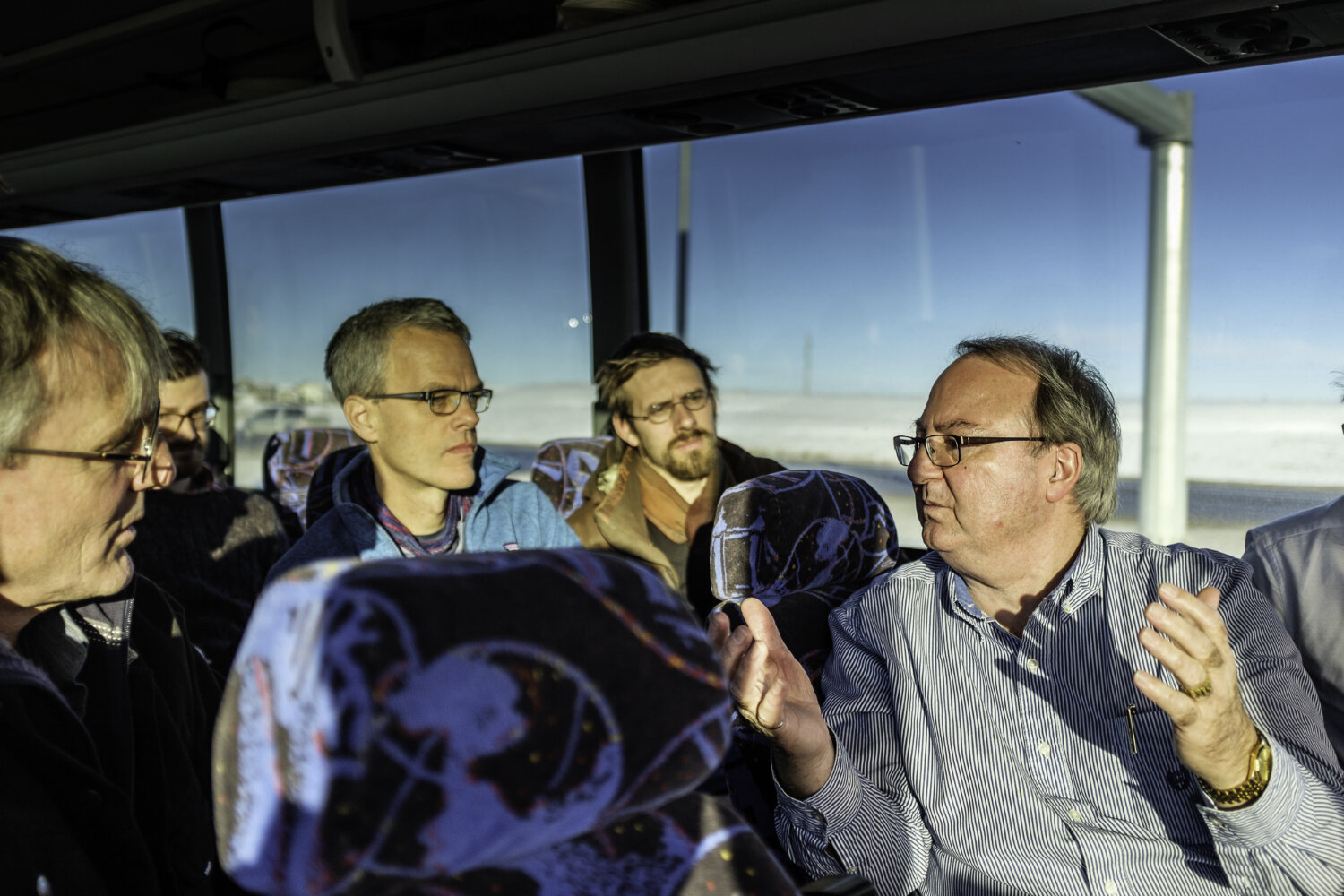
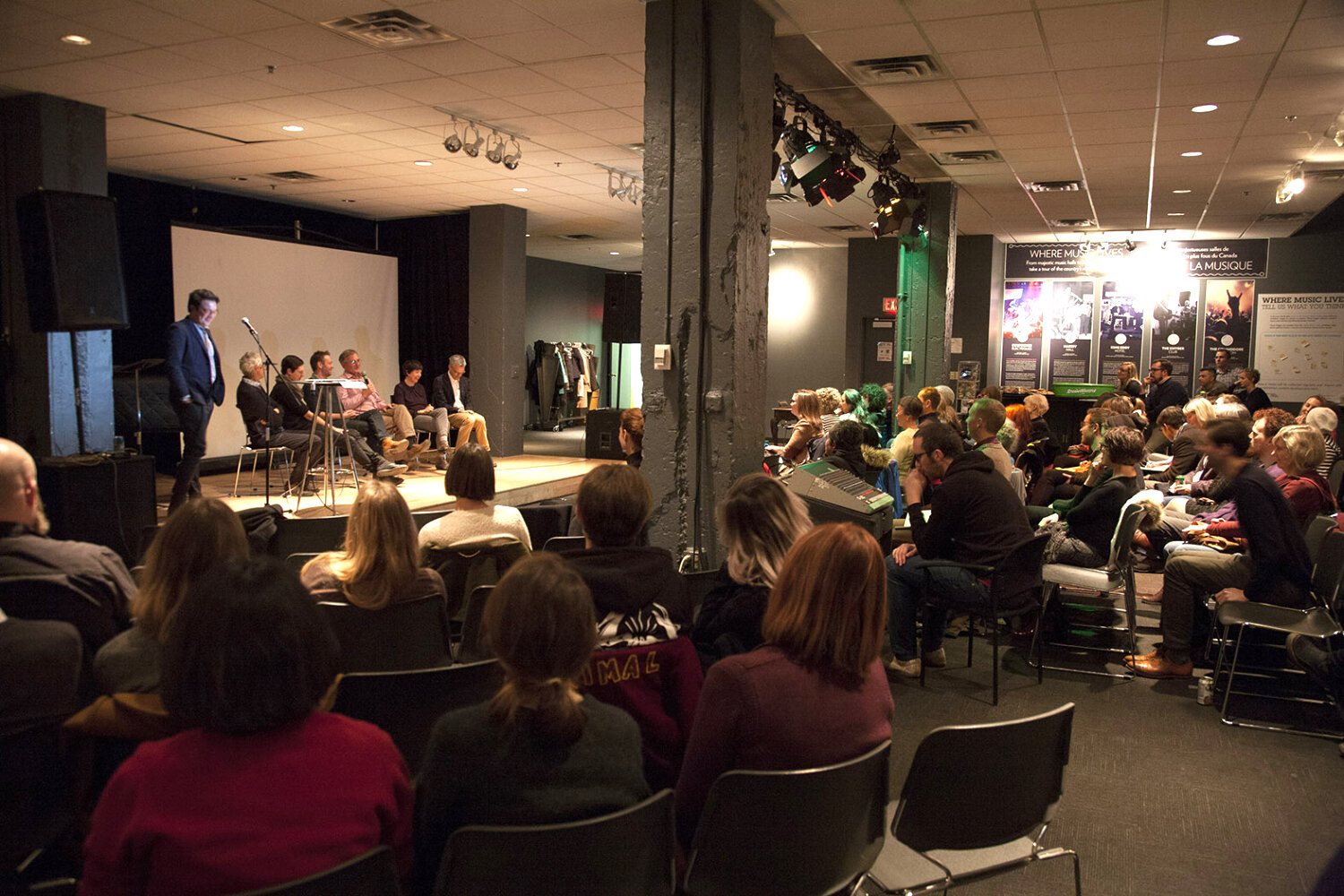
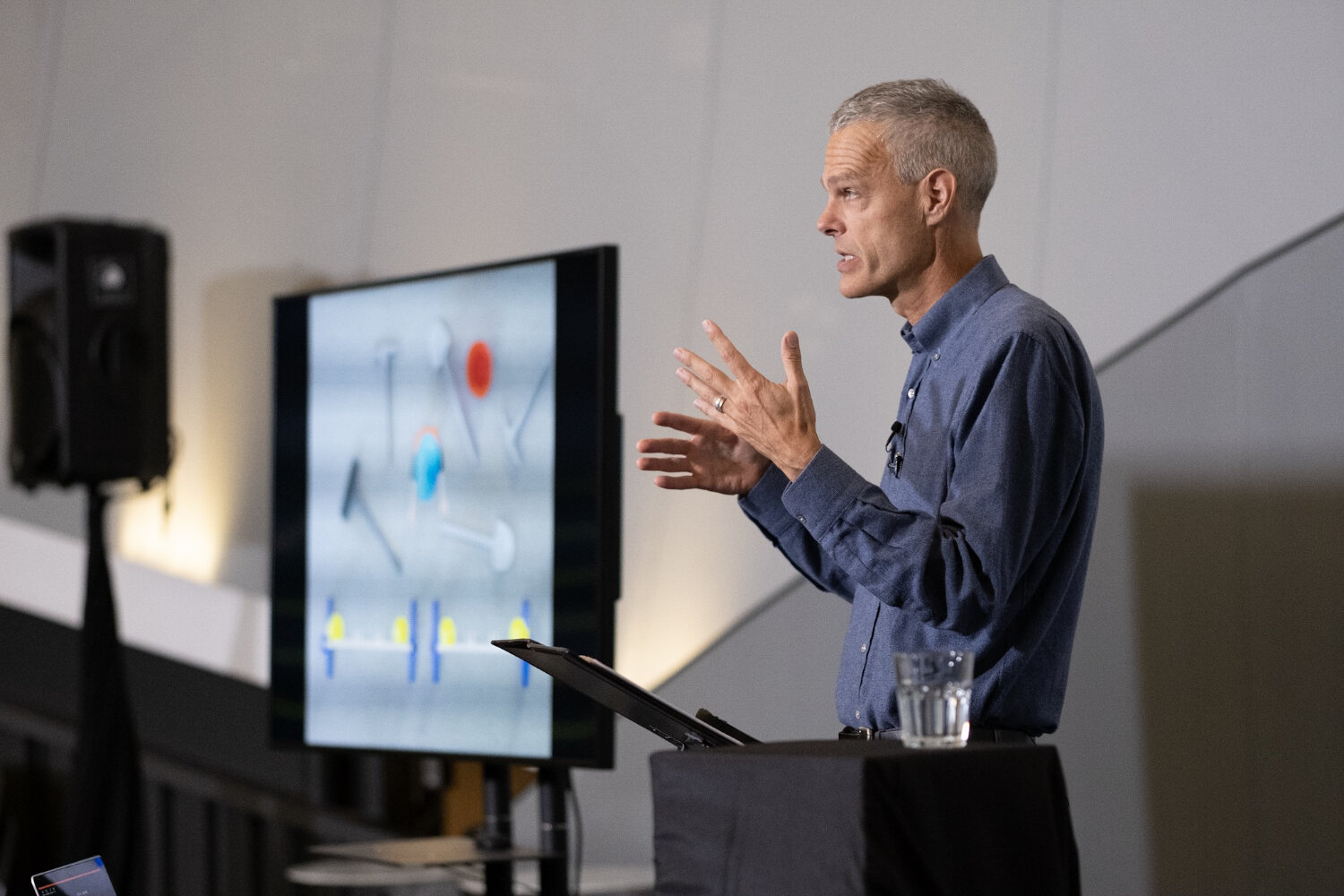
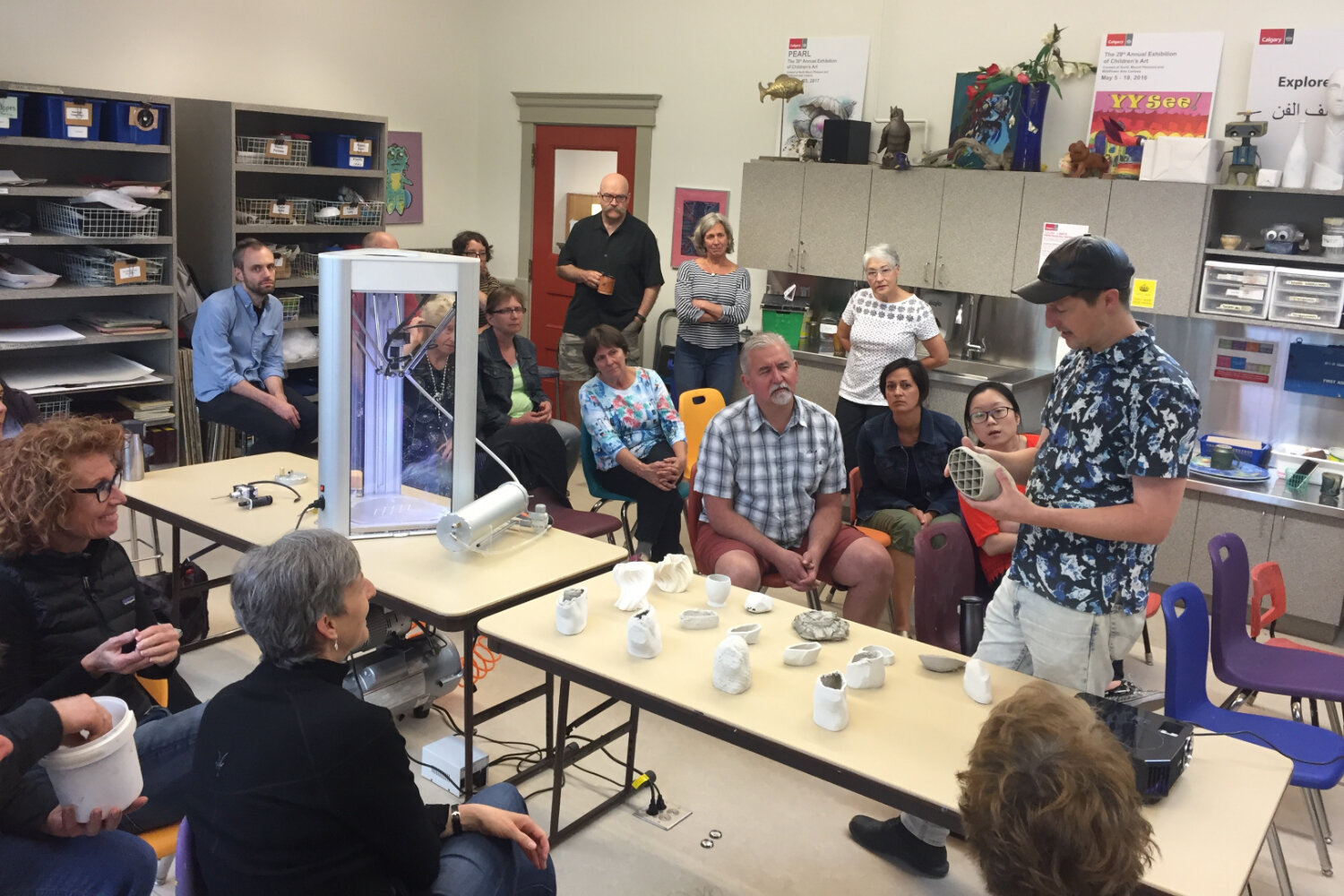
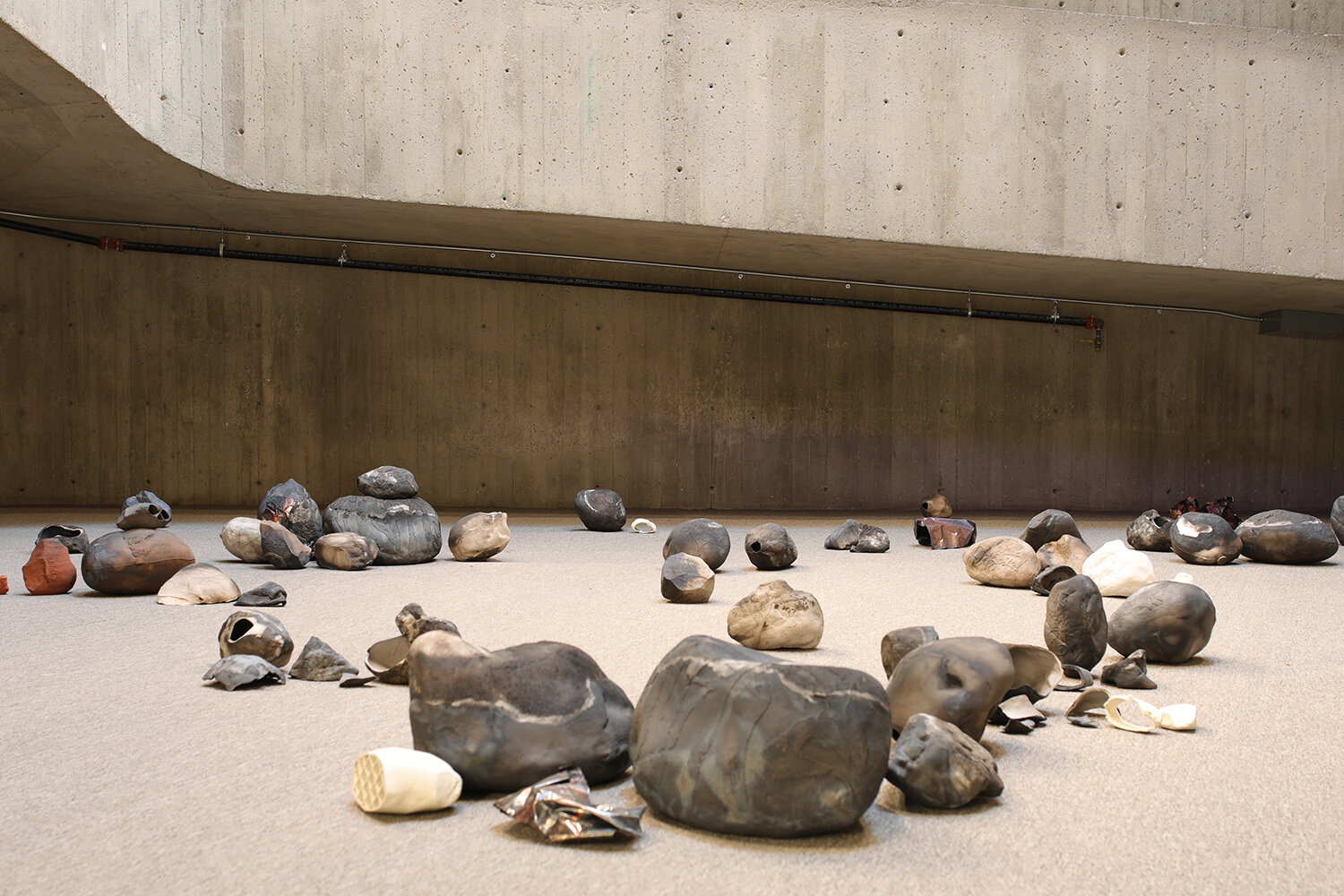
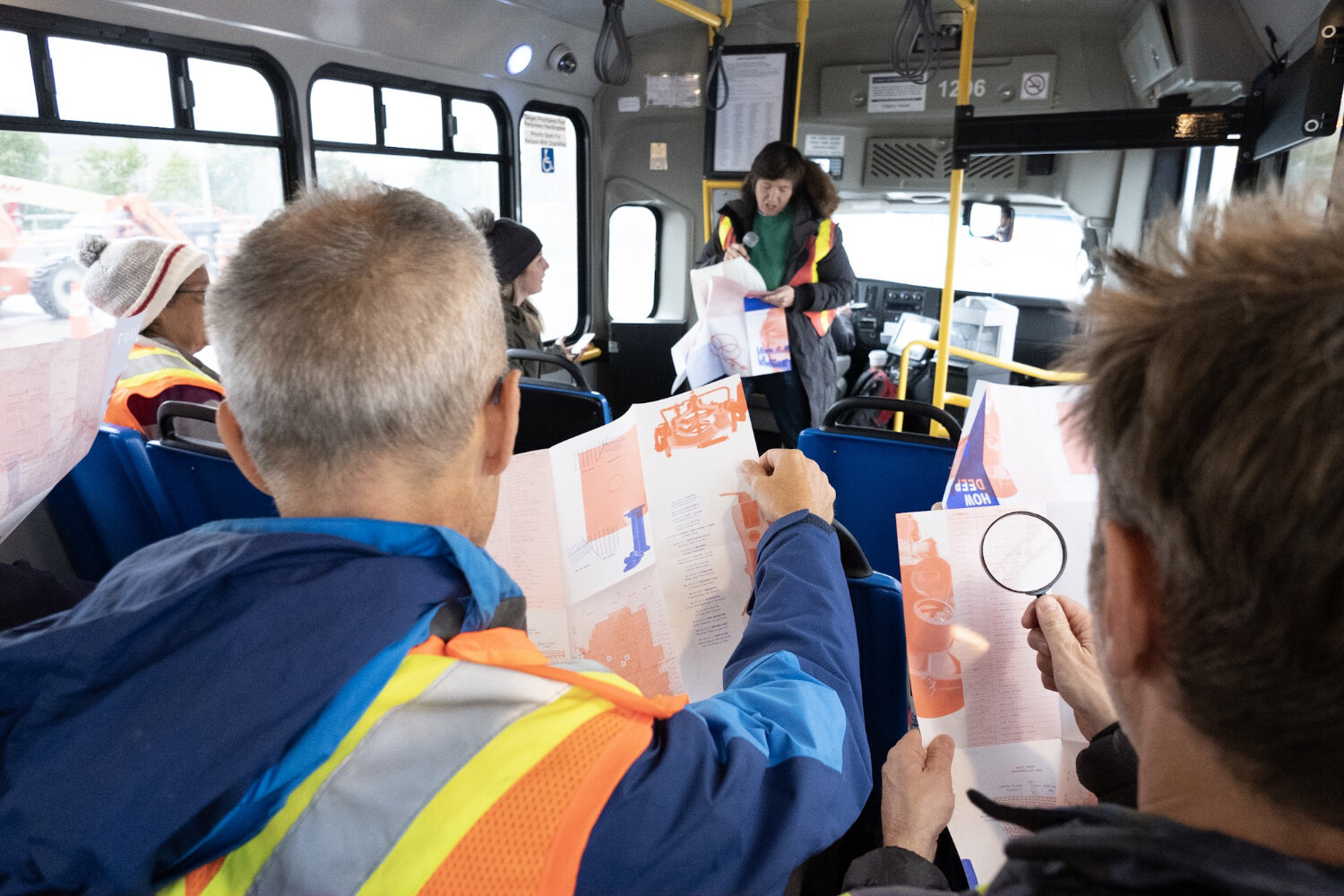
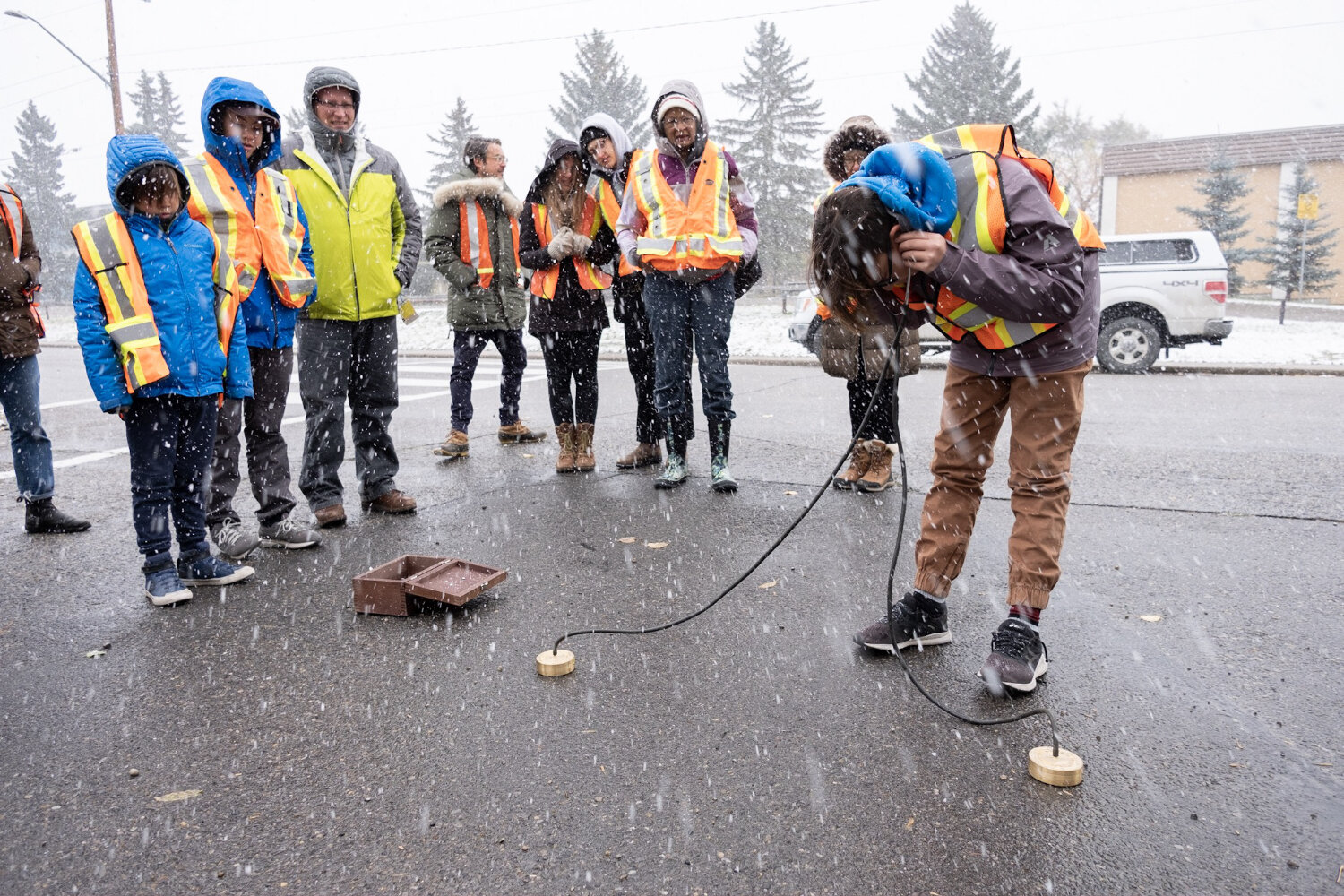
How Little We See +
For most of us, the faucet represents what we expect of our water system. Turn on the tap, water flows. The system underneath – buried pipes bringing water to and away from the home, catch basins for storms, how wastewater is moved uphill – the function of our water system is predominantly invisible to residents.
It's hard to care about what we don't understand. Watershed+ represents a public art program at the City of Calgary that is unique in its embedded process. It is a program that has gained recognition within Canada and beyond for its means of artistic investigation to call attention to that which is difficult to understand. By embedding artists within the City's Water Utilities and Environmental Protection department, new lines of questions were opened up, with the aim of creating, for the public, an emotional connection with their water system.
An early example of this process is revealed by what it didn't do. When approached to develop an identity for a decal to place on a water fountain, the water services-embedded artist duo Sans façon asked, Why? What resulted, after numerous meeting with engineers and water experts was a movable drinking fountain that when plugged into a fire hydrant at a public festival or event called attention to an invisible infrastructure. Not only is bottled water use reduced by the traveling fountain, but take a drink from the fountain and ask yourself, if a fire hydrant has potable water, what does this mean for our water system?
From the embedded artistic process, the Dynamic Environments Lab was developed. The 2013 flood had left an indelible public impression, but water engineers were concerned that as much as Calgary is an environment prone to flood, the city is equally prone to drought. Mitigating risk and developing resilience requires a public that understands. To address the concern of how to bridge a public connection with climate conditions, lead artists Sans façon developed the DE Lab, inviting five artists – Steve Gurysh, Tim Knowles, Becky Shaw, Peter von Tiesenhausen, Stokley Towles – to investigate and develop an informed response to Calgary's watershed. The diversity of the participating artists is testament to the way the call was written: the artists work in time-based, performative, environmental, and even at times, archeological ways. They explore movement and chance. They build connections with how systems work.
Watershed+ represents a widening of how we define public art. The combination of embedding artists into a city utility, of affording the time for residencies where visiting artists learn how this city works before making new work, and in the case of the DE Lab, creating a call that is undefined in outcome but open to an artistic response – these simple acts were key to generating artistic work that brought water engineers, microbiologists, flood mitigation experts, parks staff, among many others together. The work of water services is not only underground, but accustomed to being out of sight. We notice it when it's not working. What artistic curiosity contributed, both as an embedded process and visiting residencies, was a forging of new relationships for the staff to interpret their work in new ways.
It's difficult to acquire or collect a work that captures a drained reservoir that after cleaning is refilled, or a work that asks the public to listen for leaks, or the capturing of aviary movement and felled trees by beavers. There's no object to mark on a map. But that's part of the point of widening the definition of public art; the process of the artistic investigation leads us to question our ways, to see differently. The work might not be object-based, but each work is specific to the context of the challenge and uniquely connects individuals to this place.
The selection of works, described below, are on view at Contemporary Calgary until January 5, 2020.
Steve Gurysh +
Parts per trillion
Culminating three years of research and development, Parts per trillion is an artwork that imprints and accumulates human activity within a geological context. While it imagines the immense diversity of forces, subjects and objects which inhabit the Bow River Watershed, the work also alludes to the perspectives of researchers within the UEP Department, those which allow us to perceive the watershed in astonishing resolution and specificity, in parts per trillion.
Composed of an edition of earthenware ceramic sculptures, each object in this collection is the result of a process that began with the artist 3D scanning a selection of found artifacts relating to the Bow River Watershed, including graffitied river rock, a Cliff Swallow's nest, a recently unearthed bison skull, and sections of a centrifugal separator. This physical archive addresses the Bow River Watershed as a vast and entangled collective of parts: geological, historical and anthropological.
These forms were then reproduced using a ceramic 3D printing process and were subsequently pit-fired along the banks of the Bow River in Edworthy Park. This gesture both finalizes the ceramic process, carbon-dating each object, while registering a visible mark of the landscape.
Tim Knowles +
Flow Paths Mapping the Movement of Everything – Attempt 1: Inglewood Bird Sanctuary
Knowles' work centres on the Inglewood Bird Sanctuary. In 2018 he undertook an intensive artist residency within the sanctuary. Guiding this immersion was the idea of attempting to "map the movement of everything" within the sanctuary. Knowles fastidiously catalogued the movements, activity, constant flux and shifting processes of the space and its inhabitants. Utilizing a GPS enabled tablet with detailed satellite imagery, video footage, photographs, sketch books and notes, the artist was able to plot the paths of birds, animals, people, and the trees felled, industriously milled and moved by beavers.
Mapping the movements and recording hundreds of tracks has resulted in a series of drawings which reveal the workings of the sanctuary, observing the various patterns of behaviour, relationships between wildlife and environment. This work and the insights gained informed Knowles' contribution to the Inglewood Bird Sanctuary Restoration Project, influencing the routing of water channels, paths and his original design for a hybrid structure that is part log jam, part bridge and part bird blind.
Becky Shaw +
How Deep is Your Love
Becky Shaw's work consists of actions, objects, and stories developed to explore Calgarians' emotional attachment to their water infrastructure. She has followed the daily work of City leak locators, and the use of one instrument in particular, the analogue geophone. Listening beneath the noise of a city, interpreting the vibrations made by the underground infrastructure is an experience few will ever know. Even fewer possess the ability to correlate these sounds into a distinct location three meters underground.
A city infrastructure map reassembled as a massive, immersive floor installation exemplifies the vastness of the system and the complexity and achievement of water production. In comparison, the geophones seem modest and personal. However, when used by the few highly trained locators, they are integral to maintaining this complex system. Paired with the geophone, a child-sized replica commissioned by Shaw and made by City engineers emphasizes the intimacy of listening, and our changing landscapes. By making these tools accessible, Shaw attempts to intimately connect Calgarians to their water infrastructure while encouraging viewers to think about their lives in relation to materials, geographies, and systems.
Peter von Tiesenhausen +
Made in collaboration with Jen Reimer, Magnus Tiesenhausen, and Dave McGregor.
Reservoir
In the spring of 2017, the Saddleridge reservoir in northeast Calgary was drained and dried for scheduled maintenance. The immense subterranean chamber had been sealed for forty years; its full volume – 38 million litres of water – lay still, in complete darkness. It is part of a largely invisible, complex infrastructure that supplies Calgary with filtered water originating from the Bow Glacier – shuttling clean water to, and ushering dirty water away.
The empty reservoir is a colossal, alien space. A slight sound within the massive chamber can reverberate for up to 25 seconds. Certain frequencies compound upon themselves, intensifying in resonance. Peter von Tiesenhausen commissioned video and sound artists to record an improvised collaborative work within the reservoir. These fleeting, yet lingering images and sounds comprise Reservoir, a powerful impression of this unknown place. Upon maintenance completion, the reservoir was resealed and filled, returning to silence for the next four decades.
Stokley Towles +
Surfing Underground
Over a two-year period, Stokley Towles followed construction crews in Calgary as they repaired water and sewer pipes. He interviewed the workers and combined their stories with images to create a performance that explores the complexities and challenges of spending a career underground. Towles' performance draws upon workers responses to issues ranging from personal space: "Working in such close proximity, you get to know the other crew members, the shampoo they use, their deodorant"; and safety: "Place a pebble in the crack of a dirt wall. If the pebble moves, the wall is coming down"; to what subterranean work feels like: "There's something calming about it… in kind of a creepy, 'this is like a grave' kind of way."
Built with stories from dozens of City of Calgary employees, Surfing Underground weaves together the social landscape and culture of construction work, extreme weather, and the unpredictable nature of the public.
For more information about this work and others through Watershed+ and to learn more about the program you can read Plus: A Succession Plan for Watershed+ available online here.